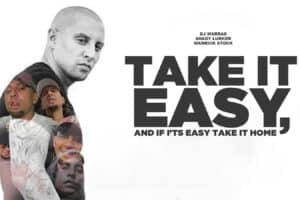The need to do some research took me to my birthplace, Kabwe, the capital of Zambia’s Central Province.

When I was a youngster, running around barefoot among the banana trees, it was called Broken Hill and was something of a hub in the thn Northern Rhodesia. Men flocked there to work on the lead and zinc mine and it was where the railhead of the old Rhodesian Railways was.
Kabwe is almost halfway between Lusaka and towns such as Ndola in the Copperbelt, so there is a fair amount of accommodation on offer. I was attracted to the Luangwa Safari Lodge because of its inviting pool and thatched buildings.
It was an oasis in a hot, muggy Kabwe and I was not disappointed – the crystal-clear pool was icy cool, as were the Mosi lagers from the bar.

ACCOMMODATION. Guest houses, like this one, are plentiful. Picture: Yvonne Fontyn
Burkard Will is a German national who has been in Zambia for about 17 years. He began building his lodge seven years ago, after buying an old mine house and renovating it extensively. The spacious dining hall, with a high thatch roof and tasteful local furnishings, can seat about 50 people, and guests stay in thatched units situated around the pool.
My unit was a cosy chalet with a three-quarter bed, shower and TV. The lodge has access to DStv but I did not try it out – I was too busy sightseeing and swimming in the pool.
The lodge was a good launching point for my ramblings around the places I grew up – the home I remember and my first school in Jasmine Street. The nearby Kabwe Golf Club, reportedly built in 1913, is open to the public and has reasonable fees.
The lodge itself is a focus for socialising for the town’s locals arriving for dinner and Burkard’s Pizza Night on Friday evenings. He has converted what used to be the boiler in the old mine house into a woodfire oven and, with his staff, turns out excellent pizzas.
The Friday I was there three young Belgian women – teaching interns wanting to gain some experience in Africa – arrived for dinner. Seated in front of the fire with a local nursery school teacher, we had a lively and interesting conversation. Burkard says he gets visitors from all over the world, on business and on holiday.

HOMEWARD BOUND. Bicycles are ubiquitous. Picture: Yvonne Fontyn
With Kabwe being so central, it is a good stopover point for tourists going from western Zambia – with Livingstone and the Victoria Falls – to northern Zambia, where the South Luangwa National Park is situated. The park is known for its variety and intense concentration of wildlife. But there are also representatives from donor organisations and corporations who come to stay.
Many of the people working for donor organisations or companies have expense accounts and Burkard is keen for them to choose his lodge for the duration of their stay. His rates of $50 (R587) to $60 a night are usually within their range, and most South Africans would find that manageable too.
He includes breakfast of eggs, bacon and tomatoes, as well as fruit if he has remembered to go to the market. Or even an avocado, if the neighbour’s tree is bearing.
There were huge avocados for sale at the market in the town centre. I bought one for five kwacha, about R6, which was sufficient for two breakfasts.

TRY THEN BUY. Friendly stall owners and food galore in a market in Kabwe.
Picture: Yvonne Fontyn
There are many informal markets and no shortage of cellphone shops along Kabwe’s streets. Still, it is to some extent a town that has lost its purpose since the government closed the lead mine 20 years ago. On the outskirts, zama zamas go through the mine dumps to extract the remaining minerals and stones that can be used in building.
Lead was discovered in 1902 and, in 1921, a Swiss miner found an important skull – named Homo rhodesiensis – in a disused mine shaft. Thought to demonstrate intermediate features between Homo sapiens and Homo neanderthalensis, Homo rhodesiensis is a hominin species believed to have lived between 400 000 and 125 000 years ago.
The site where the fossil was found is unmarked, however, and the area is under groundwater. The skull is in London’s Natural History Museum, despite an official request from Zambia to get it back.
If you are interested in Zambia’s political history, you must visit the Mulungushi Rock of Authority, where pre-independence rallies were held. A large natural rocky outcrop, it’s now under cover and was where the first president of the Republic of Zambia, Kenneth Kaunda, made several speeches to United National Independence Party members.
Another landmark is the Big Tree in the town centre, a massive fig tree that was a meeting place for the townspeople and where donkeys were inspanned for transport from the railway station in the early days.
After my ventures in and around town, I was glad to get back to the lodge, where the sparkling pool and a cold Mosi always awaited.






